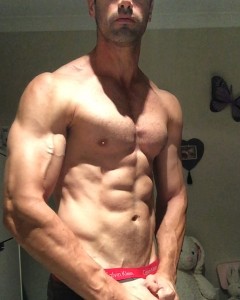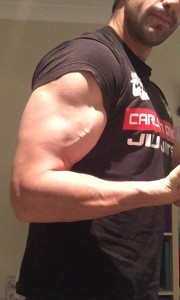Most men seem to fall into one of two camps when it comes to arm workouts:
Guys who do chin-ups (complex exercises that work multiple muscles), and guys who do curls (isolation exercises targeting a single group).
Complex movements are functional and great for people beginner and intermediate lifters, but may not deliver the pure muscle size you want. On the other hand, isolation exercises are great for hypertrophy but not function, meaning they’ll pack on some muscle, but won’t necessarily help your total body strength. Combine the two, and you get the best of both worlds.
Look at your isolation exercises and complex movements as lobster and steak: Each is good on their own, but together they’re unstoppable. Workouts that have curls and chin-ups, or bench presses and tricep pushdowns, are more likely to deliver both the size and strength you’re looking for.



